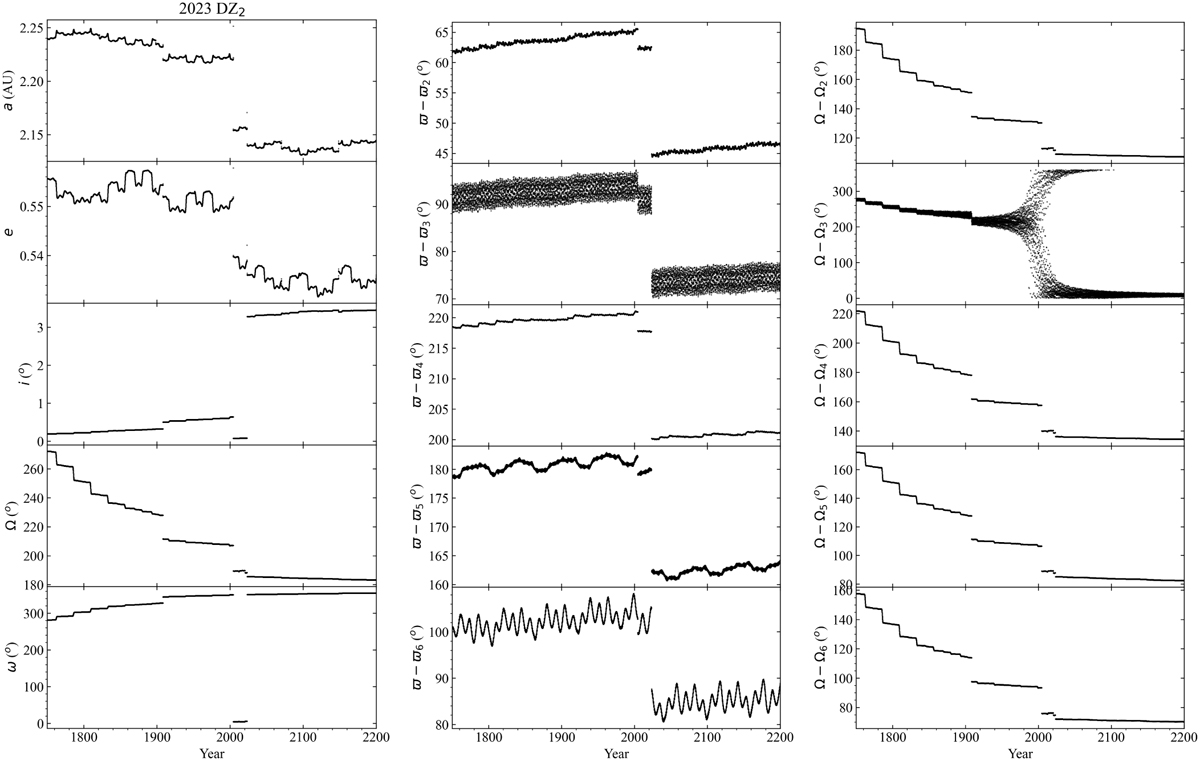Fig. 2

Download original image
Relevant dynamical evolution of 2023 DZ2. Left panels: short-term orbital evolution of 2023 DZ2: a, semi-major axis (top panel); e, eccentricity (second to top panel); i, inclination (centre panel); Ω, longitude of the ascending node (second panel from bottom); and ω, argument of perihelion (bottom panel). Centre panels: longitude of perihelion of 2023 DZ2, ϖ = Ω + ω, relative to that of Venus (ϖ2, top panel), Earth (ϖ3, second to top panel), Mars (ϖ4, centre panel), Jupiter (ϖ5, second panel from bottom), and Saturn (ϖ6, bottom panel). An apsidal secular resonance leads to the libration of the angle ϖ – ϖi about a constant value (0° or 180°). Right panels: longitude of the ascending node relative to that of Venus (Ω2, top panel), Earth (Ω3, second to top panel), Mars (Ω4, centre panel), Jupiter (Ω5, second panel from bottom), and Saturn (Ω6, bottom panel). A nodal secular resonance occurs when the angle Ω – Ωi librates about a constant value. The evolution shown here is based on the nominal orbit in Table 1 and the output cadence is 15 days. Data source: JPL Horizons.
Current usage metrics show cumulative count of Article Views (full-text article views including HTML views, PDF and ePub downloads, according to the available data) and Abstracts Views on Vision4Press platform.
Data correspond to usage on the plateform after 2015. The current usage metrics is available 48-96 hours after online publication and is updated daily on week days.
Initial download of the metrics may take a while.


